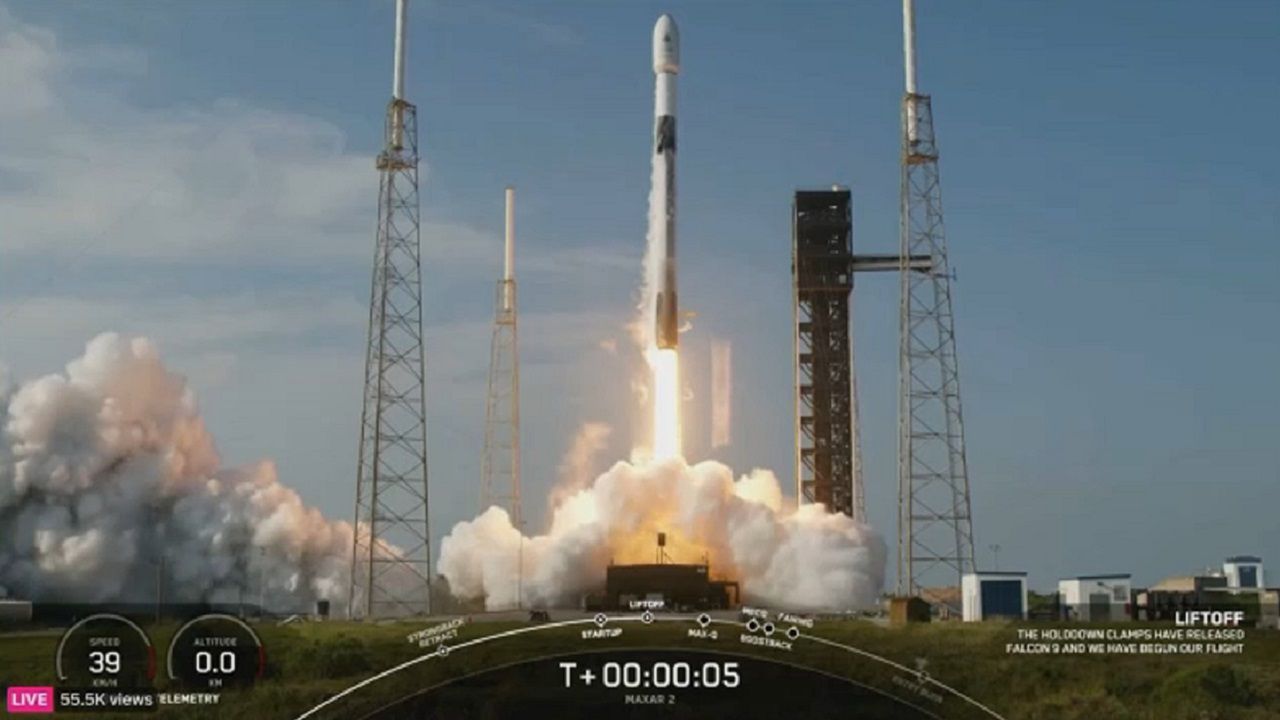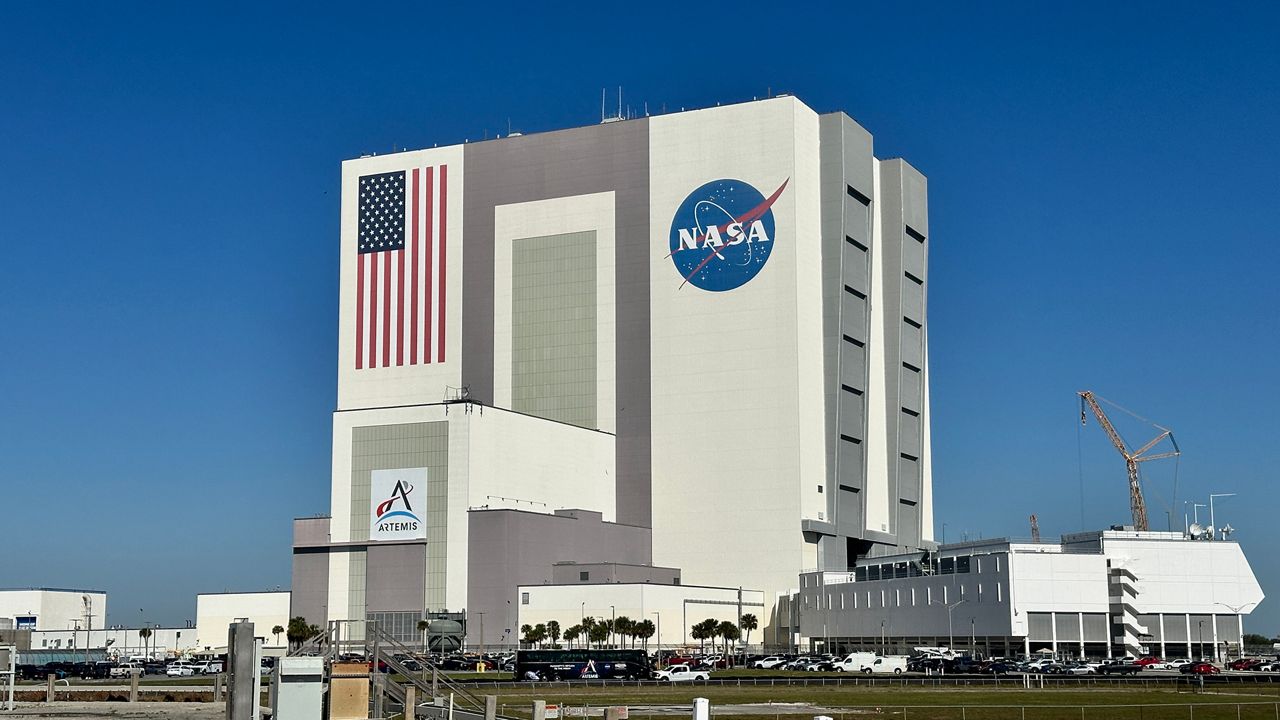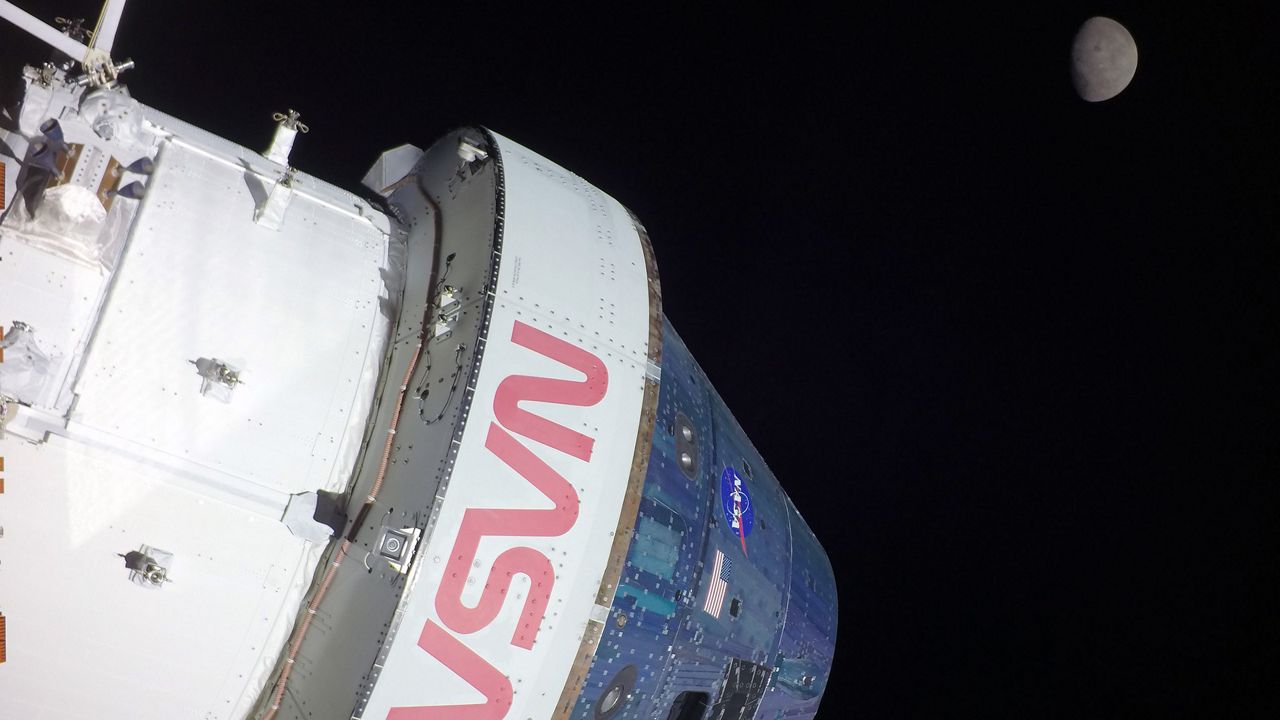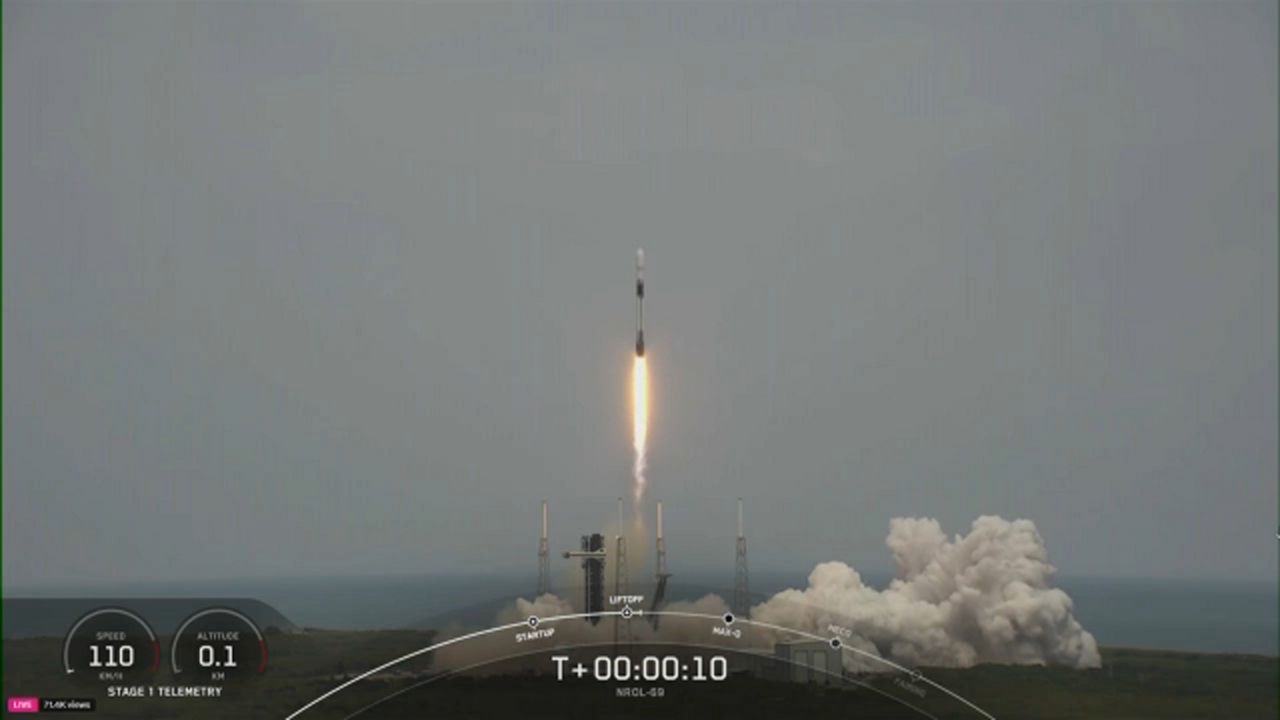CAPE CANAVERAL SPACE FORCE STATION — SpaceX sent up a pair of Maxar’s Worldview Legion imaging satellites on Thursday morning.
What You Need To Know
- The Maxar 2 mission took off from Space Launch Complex 40
- The weather was good for the takeoff
- Many heard the sonic boom as the first-stage booster returned for a landing
Liftoff of @Maxar 2! pic.twitter.com/FYnti1LmH7
— SpaceX (@SpaceX) August 15, 2024
The one-hour window opened at 9 a.m. ET as SpaceX’s Falcon 9 took off from Space Launch Complex 40 at Cape Canaveral Space Force Station, stated the company.
The launch forecast looked pretty good for the Maxar 2 mission, with the 45th Weather Squadron giving an 80% chance of good liftoff conditions. The only main concern was the cumulus cloud rule.
However, if the launch were scrubbed for whatever reason, the next attempt would have been Friday, but with a three-hour launch window starting at 9 a.m. ET.
A Sweet 16 Launch
This is the 16th mission for this Falcon 9's first-stage booster, named B1076. The 15 missions it has done prior are pretty impressive.
- CRS-26
- OneWeb Flight 16
- Intelsat IS-40e
- Starlink Group 6-1 mission
- Starlink Group 6-3 mission
- Starlink Group 6-6 mission
- Starlink Group 6-14 mission
- Starlink Group 6-21 mission
- SES O3B-mPOWER
- Ovzon-3
- Starlink Group 6-40 mission
- Eutelsat 36D
- Starlink 6-54
- Starlink Group 6-64 mission
- Turksat 6A
After the stage separation, B1076 landed at Landing Zone 1 at Cape Canaveral Space Force Station.
A sonic boom was heard for miles, even in the outskirts of Orlando.
Falcon 9’s first stage has landed on Landing Zone 1 pic.twitter.com/uDkh5ueR3o
— SpaceX (@SpaceX) August 15, 2024
About the mission
The Maxar company, based in Colorado, will see the Maxar 2 mission go up. In fact, this mission is just the second of three that will send six of the company’s WorldView Legion satellites into orbit.
The first two satellites were launched in May of this year from Vandenberg Space Force Base in California.
We designed a new, custom dispenser for launching the WorldView Legion satellites. It secures the satellites to the launch vehicle, protects them during launch, and helps deploy them into orbit. We worked with @ScotForge and Tech-Max to create the dispenser.
— Maxar Technologies (@Maxar) August 7, 2024
More details about… pic.twitter.com/dG8HYT247b
These satellites provide high-resolution images designed to help with precision mapping, site monitoring and geospatial analytics, among other things.
“These two satellites are part of a block of six WorldView Legion satellites. Once on orbit, the six satellites will triple Maxar’s capacity to collect 30 cm-class imagery, enable dawn-to-dusk collection and allow Maxar to image the most rapidly changing areas on Earth as frequently as every 20 to 30 minutes,” the company explained in a July press release.








